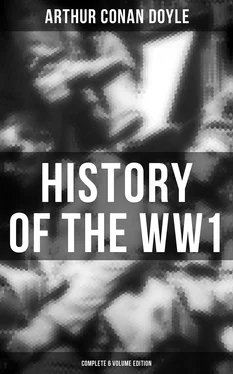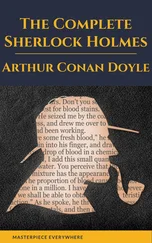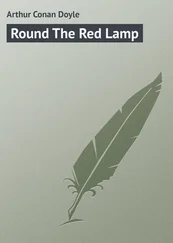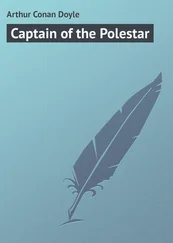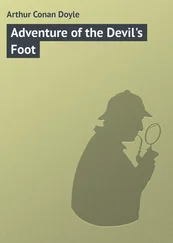Meanwhile the lines upon the flank of the Seaforths which had been lost by the Dehra-Dun Brigade were carried by the 2nd Brigade (Westmacott), the 1st North Lancashire and 1st Northamptons leading the attack with the 2nd Rifles in support. Though driven back by a violent counter-attack in which both leading regiments, and especially the Lancashire men, lost heavily, the Brigade came again, and ended by making good the gap in the line. Thus the situation on the morning of the 22nd looked very much better than upon the day before. On this morning, as so many of the 1st Corps were in the advanced line, Sir Douglas Haig took over the command from Sir James Willcocks. The line had been to some extent re-established and the firing died away, but there were some trenches which were not retaken till a later date.
Such was the scrambling and unsatisfactory fight of Givenchy, a violent interlude in the drab records of trench warfare. It began with a considerable inroad of Germans into our territory and heavy losses of our Indian Contingent. It ended by a general return of the Germans to their former lines, and the resumption by the veteran troops of the First Division of the main positions which we had lost. Neither side had gained any ground of material value, but the balance of profit in captures was upon the side of the Germans, who may fairly claim that the action was a minor success for their arms, since they assert that they captured some hundreds of prisoners and several machine-guns. The Anglo-Indian Corps had 2600 casualties, and the First Corps 1400, or 4000 in all. The Indian troops were now withdrawn for a rest, which they had well earned by their long and difficult service in the trenches. To stand day after day up to his knees in ice-cold water is no light ordeal for a European, but it is difficult to imagine all that it must have been to a Southern Asiatic. The First Corps took over the La Bassée lines.
About the same date as the Battle of Givenchy there was some fighting farther north at Rouge Banc, where the Fourth Corps was engaged and some German trenches were taken. The chief losses in this affair fell upon those war-worn units, the 2nd Scots Guards and 2nd Borderers of the 20th Brigade. Henceforward peace reigned along the lines for several weeks—indeed Christmas brought about something like fraternisation between British and Germans, who found a sudden and extraordinary link in that ancient tree worship, long anterior to Christianity, which Saxon tribes had practised in the depths of Germanic forests and still commemorated by their candle-lit firs. For a single day the opposing forces mingled in friendly conversation and even in games. It was an amazing spectacle, and must arouse bitter thoughts concerning those high-born conspirators against the peace of the world, who in their mad ambition had hounded such men on to take each other by the throat rather than by the hand. For a day there was comradeship. But the case had been referred to the God of Battles, and the doom had not yet been spoken. It must go to the end. On the morning of the 26th dark figures vanished reluctantly into the earth, and the rifles cracked once more. It remains one human episode amid all the atrocities which have stained the memory of the war.
So ended 1914, the year of resistance. During it the Western Allies had been grievously oppressed by their well-prepared enemy. They had been overweighted by numbers and even more so by munitions. For a space it had seemed as if the odds were too much for them. Then with a splendid rally they had pushed the enemy back. But his reserves had come up and had proved to be as superior as his first line had been. But even so he had reached his limit. He could get no further. The danger hour was past. There was now coming the long, anxious year of equilibrium, the narrative of which will be given in the succeeding volume of 1915. Finally will come the year of restoration which will at least begin, though it will not finish, the victory of the champions of freedom.
THE END
A History of the Great War
The British Campaign in France and Flanders
Volume II—1915
Table of Contents Table of Contents A History of the Great War, Volume 1 A History of the Great War The British Campaign in France and Flanders Volume I—1914 Table of Contents TO GENERAL SIR WILLIAM ROBERTSON THIS CHRONICLE OF THE GREAT WAR IN WHICH HE RENDERED SUCH INVALUABLE SERVICE TO HIS COUNTRY IS DEDICATED A History of the Great War, Volume 2 A History of the Great War The British Campaign in France and Flanders Volume II—1915 Table of Contents A History of the Great War, Volume 3 A History of the Great War, Volume 4 A History of the Great War, Volume 5 A History of the Great War, Volume 6
Table of Contents Table of Contents A History of the Great War, Volume 1 A History of the Great War The British Campaign in France and Flanders Volume I—1914 Table of Contents TO GENERAL SIR WILLIAM ROBERTSON THIS CHRONICLE OF THE GREAT WAR IN WHICH HE RENDERED SUCH INVALUABLE SERVICE TO HIS COUNTRY IS DEDICATED A History of the Great War, Volume 2 A History of the Great War The British Campaign in France and Flanders Volume II—1915 Table of Contents A History of the Great War, Volume 3 A History of the Great War, Volume 4 A History of the Great War, Volume 5 A History of the Great War, Volume 6
Preface
I. The Opening Months of 1915
II. Neuve Chapelle and Hill 60
III. The Second Battle of Ypres Stage I. The Gas Attack, April 22-30
IV. The Second Battle of Ypres Stage II. The Bellewaarde Lines
V. The Battle of Richebourg Festubert May 9-24
VI. The Trenches of Hooge
VII. The Battle of Loos The First Day—September 25
VIII. The Battle of Loos The Second Day—September 26
IX. The Battle of Loos From September 27 to the End of the Year
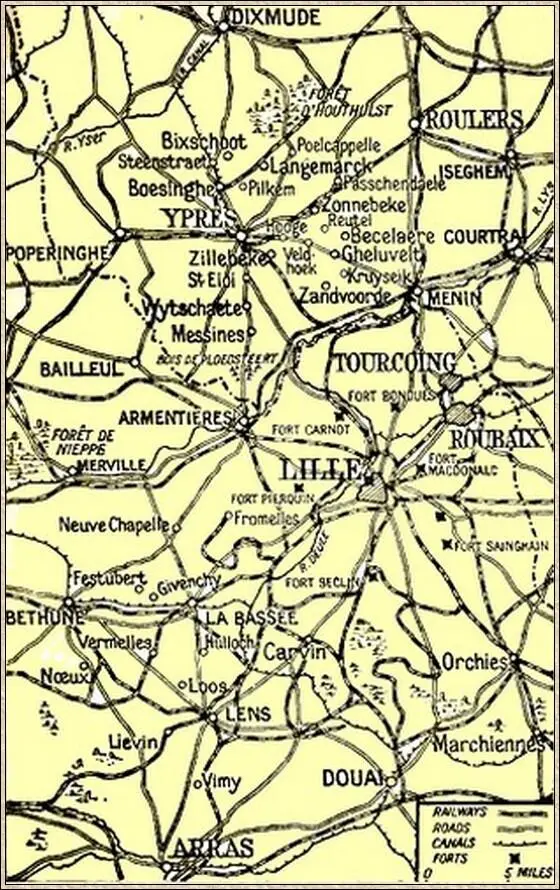
The British Front in 1915
Table of Contents
In the previous volume of this work, which dealt with the doings of the British Army in France and Flanders during the year 1914, I ventured to claim that a great deal of it was not only accurate but that it was very precisely correct in its detail. This claim has been made good, for although many military critics and many distinguished soldiers have read it there has been no instance up to date of any serious correction. Emboldened by this I am now putting forward an account of the doings of 1915, which will be equally detailed and, as I hope, equally accurate. In the late autumn a third volume will carry the story up to the end of 1916, covering the series of battles upon the Somme.
The three years of war may be roughly divided into the year of defence, the year of equilibrium, and the year of attack. This volume concerns itself with the second, which in its very nature must be less dramatic than the first or third. None the less it contains some of the most moving scenes of the great world tragedy, and especially the second Battle of Ypres and the great Battle of Loos, two desperate conflicts the details of which have not, so far as I know, been given up to now to the public.
Now, as before, I must plead guilty to many faults of omission, which often involve some injustice, since an author is naturally tempted to enlarge upon what he knows at the expense of that about which he is less well informed. These faults may be remedied with time, but in the meantime I can only claim indulgence for the obvious difficulty of my task. With the fullest possible information at his disposal, I do not envy the task of the chronicler who has to strike a just balance amid the claims of some fifty divisions.
Читать дальше
